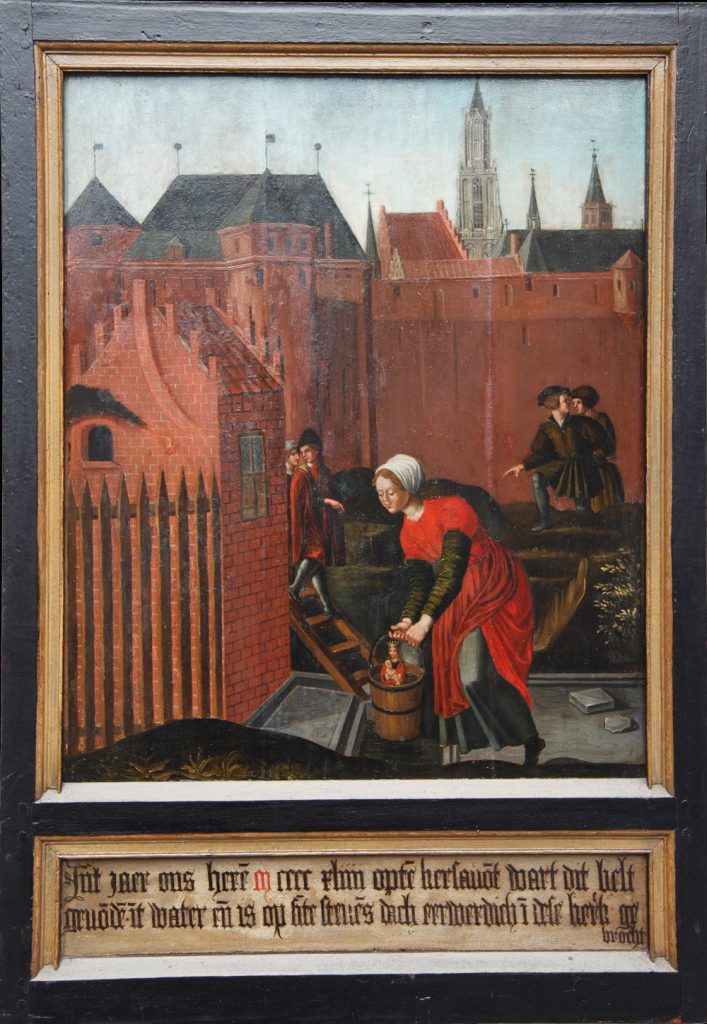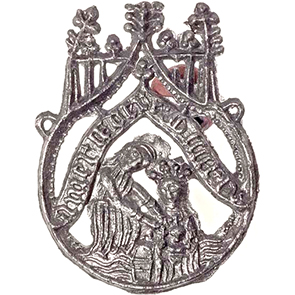 Did you hear about the medieval pilgrim from Gdańsk who visited the Netherlands? The story begins around Christmas 1444, when something remarkable occurred in Amersfoort, near Utrecht: a local girl, Margriet Gijsen, purportedly had three visions, in which God told her to go to a canal outside the city and find a statue of the Virgin Mary. Margriet did so and pulled the statue out of the icy water. This event was interpreted as a miracle, and Amersfoort quickly grew into an well-known place of worship. Pilgrims from all over Europe came to honour the statue, particularly on the Sunday before Pentecost. The miracle of Margriet and ca. 550 other miracles related to the statue are recorded in the so-called Mirakelboek, which starts in 1444 and ends in 1545. The statue was especially popular with shipmen and evoked in case of sea storms, shipwreck and drowning.
Did you hear about the medieval pilgrim from Gdańsk who visited the Netherlands? The story begins around Christmas 1444, when something remarkable occurred in Amersfoort, near Utrecht: a local girl, Margriet Gijsen, purportedly had three visions, in which God told her to go to a canal outside the city and find a statue of the Virgin Mary. Margriet did so and pulled the statue out of the icy water. This event was interpreted as a miracle, and Amersfoort quickly grew into an well-known place of worship. Pilgrims from all over Europe came to honour the statue, particularly on the Sunday before Pentecost. The miracle of Margriet and ca. 550 other miracles related to the statue are recorded in the so-called Mirakelboek, which starts in 1444 and ends in 1545. The statue was especially popular with shipmen and evoked in case of sea storms, shipwreck and drowning.
One miracle tells of a man from Gdańsk, whose ship was lost in a storm at sea. He floated on a raft for nine hours, until he thought of the Holy Virgin from Amersfoort, asking her to save him. He promised to wear a shirt made of coarse hair – an instrument of penance. Suddenly, he saw a shining light from the east, together with an image of the Holy Virgin. The man soon drifted ashore and wore the shirt as he promised, until he travelled to Amersfoort. Upon his arrival, he offered the shirt to the statue in memory of his pilgrimage and as a token of his gratitude.
 The story can be related to a pilgrim’s badge from Amersfoort, which was found in or near Gdańsk. The badge depicts the moment when Margriet pulled the statue of Mary out of the water. Such badges were made at the place of worship and could be purchased by pilgrims, who then took them back home. The badge shows the importance and popularity of Amersfoort as a medieval pilgrimage site, which really was visited by people from Gdańsk. Perhaps the man from the story took a badge home as well…
The story can be related to a pilgrim’s badge from Amersfoort, which was found in or near Gdańsk. The badge depicts the moment when Margriet pulled the statue of Mary out of the water. Such badges were made at the place of worship and could be purchased by pilgrims, who then took them back home. The badge shows the importance and popularity of Amersfoort as a medieval pilgrimage site, which really was visited by people from Gdańsk. Perhaps the man from the story took a badge home as well…
The painting was made ca. 1525. It hangs in the Oud Katholieke Parochie van de Heilige Georgius op ’t Zand in Amersfoort. The badge lies in the Muzeum Archeologiczne in Gdańsk (MAG/GD/255/133/03/3814, nr. GKPP 389).
*I originally wrote this post for the social media outlets of the Dutch Embassy in Poland. This was post no. 15.